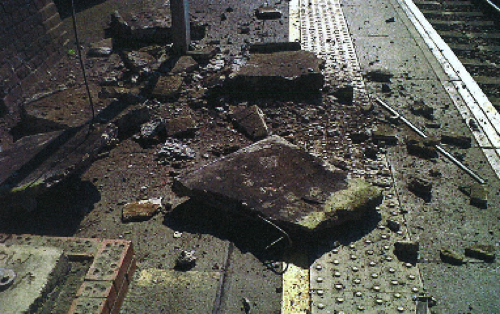Monday Accident & Lessons Learned: Fatality Near-Miss Because of Corrective Actions NI or Corrective Action NYI

A recent rail accident report by the UK Rail Accident Investigation Branch described a facility maintenance failure that could have caused a fatality. Here’s a brief excerpt from the report:
“At about 16:00 hours on Thursday 1 August 2013, concrete cladding fell from the bridge spanning Denmark Hill station, London, and most of the debris landed on platform 1. … The concrete cladding had been added to the bridge structure in about 1910 and fell because of gradual deterioration of the fixing arrangements. Deterioration of the cladding fixing arrangements had been reported to Network Rail over a period of at least four years but the resulting actions taken by Network Rail and its works contractor were inadequate.”
Under the Management System portion of the TapRooT® Root Cause Tree® you will find Corrective Actions Need Improvement and Corrective Actions Not Yet Implemented root causes under the under the Corrective Action near root cause. We used to abbreviate these CANYI and CALTA in the old days (Corrective Action Not Yet Implemented and Corrective Actions Less Than Adequate).
The TapRooT® theory of management requires that management implements effective corrective action once they are aware of a problem. The corrective action must not only be effective, but also it must be implemented in a timely manner (commensurate with the risk the problem presents).
In this case, I would probably lean toward the Corrective Action Not Yet Implemented root cause, although, the Corrective Action Needs Improvement root cause might apply to the previous inadequate temporary fixes.
What can you learn from this?
Does your management support effective timely corrective actions? Or do you have a large backlog of ineffective fixes? Maybe you need corrective action improvements!



